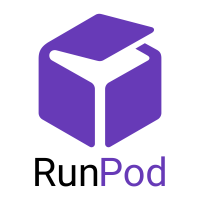Want to run powerful Large Language Models (LLMs) on your own computer with flexible scalability? This guide will help you achieve just that!
Prerequisites
A computer (local or cloud) with: Docker installed Git installed Relatively fast upload speeds At least 100GB of free storage space
A custom model on your computer, or a public link to obtain it
Setting Up Your Environment
Clone the repository: First, navigate to the directory where you want to work and run the git clone command to clone the repository: git clone https://github.com/runpod-workers/worker-a1111.gitThis will create a directory named "worker-a1111" in your folder. Access this directory with: cd worker-a1111Examine the directory structure: You will see a few files and folders, including: Dockerfile: Instructions for building the Docker image.src/rp_handler.py: Python code executed as a worker.src/start.sh: Script run when the container starts. This script internally calls the handler and starts the AUTOMATIC1111 API.
Replacing the Default Model with a Custom Model
Remove the old model from the Docker image. Add your custom model. Modify the start.sh script to point to the new model.
Using a Local Model:
If the model is already downloaded locally, save it in the same directory and rename it to model.safetensors. Edit your Dockerfile by adding the following line: ADD model.safetensors /This will add your model file to the Docker image.
Downloading a Model from the Internet:
RUN wget -O /model.safetensors https://civitai.com/api/download/models/4823
Modifying the start.sh Script
The start.sh script needs to point to the correct model file. If your model is named model.safetensors and is in the same directory, no changes are needed. If the name or location is different, change the line --ckpt /model.safetensors in the start.sh script accordingly.
Building the Docker Image
sudo DOCKER_BUILDKIT=1 docker build .
Pushing the Image to Docker Hub (Optional)
You can register an account at https://hub.docker.com/ to share your Docker image.Login to Docker Hub in your terminal and push your image to the repository you created.
Using the Template on RunPod
RunPod Documentation
Autoscaling: https://docs.runpod.io/serverless-ai/custom-apis/autoscaling Using your API: https://docs.runpod.io/serverless-ai/custom-apis/using-your-api
Conclusion




0 comments:
Post a Comment